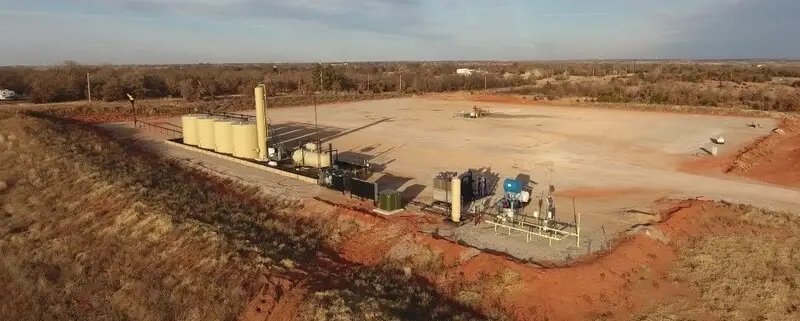Investing in mineral rights: A path to passive income
The quest for passive income streams has led investors to explore various opportunities beyond traditional investments like stocks and bonds. Onesuch avenue that has gained traction in recent years is investing in mineral rights. Mineral rights grant individuals or entities ownership over the subsurface minerals of a property. Allowing them to collect royalties from the extraction and sale of valuable resources like oil, natural gas, and minerals. In this extensive guide, we will explore the world of mineral rights investments, elucidating how they work, their benefits, potential risks, the different types of minerals, strategies for success, and key considerations for prospective investors. Understanding the dynamics of mineral rights is crucial for making informed decisions and harnessing the potential for passive income.
Understanding Mineral Rights
Mineral rights, often referred to as subsurface rights, are property rights that grant the holder ownership over the valuable resources beneath the surface of a property. These resources can include oil, natural gas, coal, metals, and minerals, among others. Mineral rights are often separated from surface rights. Meaning that one party owns the surface property while another party owns the minerals beneath it.
How Mineral Rights Investments Work
Mineral rights investments allow individuals or entities to purchase or lease the rights to extract, produce, and sell valuable resources found beneath the land surface. These investments typically take the form of lease agreements, royalty interests, or working interests. Investors can either lease their mineral rights to energy companies for a set period or participate directly in the drilling and extraction processes.
Mineral rights investments generate income primarily through royalty payments. Which are a percentage of the revenue earned from the sale of the extracted resources. Investors can also receive lease bonus payments, which are one-time payments made by energy companies when leasing the mineral rights.
Advantages of Investing in Mineral Rights
Investing in mineral rights offers several compelling advantages:
Passive Income: Mineral rights investments can provide a consistent source of passive income through royalty payments without the need for active management.
Hedge Against Inflation: Royalty payments often increase with the rising prices of commodities, providing a hedge against inflation.
Portfolio Diversification: Mineral rights can diversify an investment portfolio, reducing risk by having assets in a different sector.
Potential for High Returns: Successful mineral rights investments can yield substantial returns, particularly in regions with abundant resources.
Potential Risks and Considerations
While mineral rights investments hold the potential for significant returns, they are not without risks:
Market Volatility: The prices of commodities like oil and natural gas are subject to significant fluctuations, which can impact the value of royalty payments.
Geological Uncertainty: There is a risk that drilling may not yield successful results, resulting in lower or no returns.
Environmental and Regulatory Risks: Energy companies must adhere to environmental regulations, and changes in laws can affect the viability of a mineral rights investment.
Types of Minerals and Resources
Mineral rights can pertain to a wide range of valuable resources, including:
Oil: Ownership of oil rights allows for royalty payments from oil production.
Natural Gas: Natural gas rights enable investors to collect royalties from natural gas extraction.
Coal: Coal rights grant the holder ownership over coal deposits, which can be sold or leased to coal mining companies.
Metals and Minerals: These rights encompass a vast array of resources, from precious metals like gold and silver to industrial minerals like limestone and gypsum.
Strategies for Successful Mineral Rights Investments
To maximize the potential of mineral rights investments, consider the following strategies:
Due Diligence: Thoroughly research the geological potential of the area and the reputation and financial stability of the energy company involved.
Diversification: Spread your investments across different types of minerals and resources to mitigate risk associated with a single commodity.
Stay Informed: Keep abreast of market conditions, industry trends, and regulatory changes that may impact your investments.
Legal and Financial Advisors: Consult with experts in the field. To ensure you understand the terms of the investment and to develop a solid strategy.
Tax Implications
Mineral rights investments can have tax implications. Consult a tax advisor to understand the tax treatment of royalty income, potential deductions, and strategies for minimizing tax liability.
Real-World Examples of Mineral Rights Investments
Several investors have achieved substantial success through mineral rights investments. Notable examples include:
Bakken Formation: Investors in the Bakken Formation, a prolific oil-producing region in North Dakota, have received substantial royalties from oil production.
Copper Mining: Copper mining companies often lease mineral rights from landowners, providing a steady stream of income for the property owners.
How to Begin Investing in Mineral Rights
If you’re interested in investing in mineral rights, follow these steps:
- Education: Learn about the mining and energy industry, the types of minerals you’re interested in, and the extraction process.
- Research: Identify regions with known resources and reputable mining or drilling companies.
- Negotiate Leases: Engage in negotiations with lessees to secure favorable terms and agreements.
- Legal and Financial Professionals: Seek advice from legal and financial experts to ensure you make informed investment decisions.
Investing in mineral rights provides a pathway to passive income and portfolio diversification. However, it comes with risks, and investors must approach it with diligence and consideration. A well-researched investment strategy, diversification, and the guidance of experts can help unlock the wealth-generating potential of this lucrative investment avenue.
In a world with growing demands for valuable resources, mineral rights investments offer a promising addition to a diversified investment portfolio.
If you have further questions related to the topic, feel free to reach out to us here.












Leave a Reply
Want to join the discussion?Feel free to contribute!